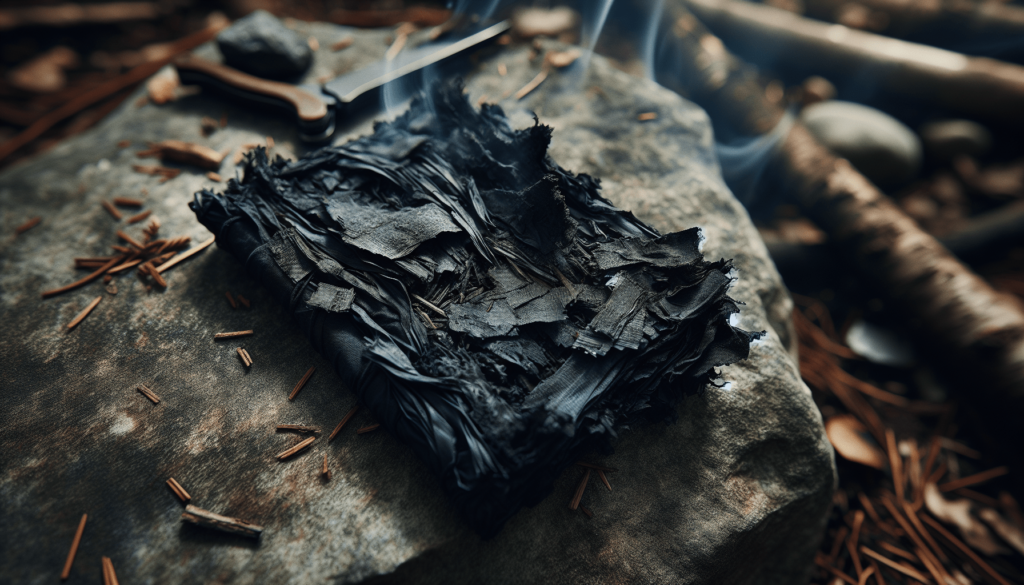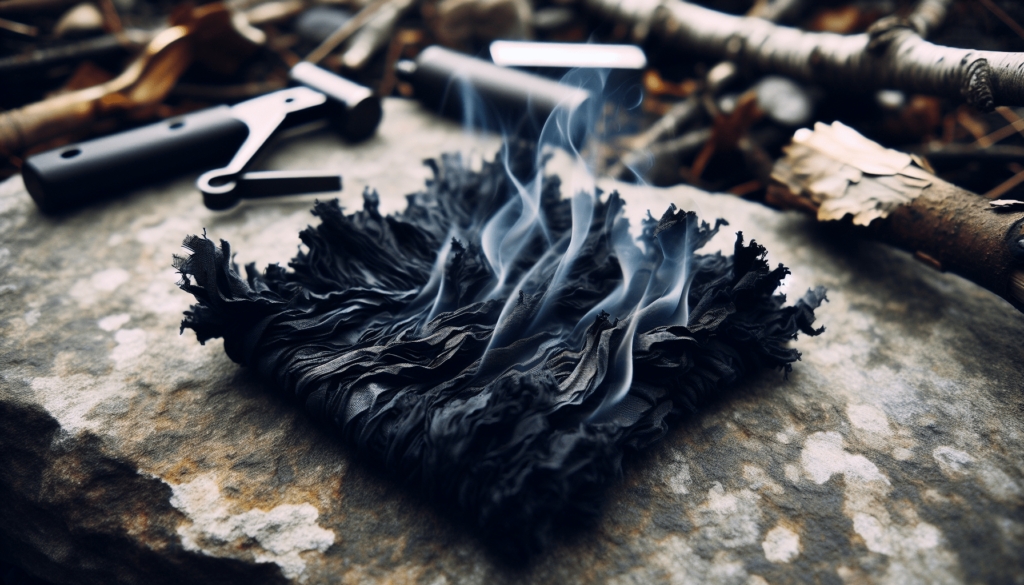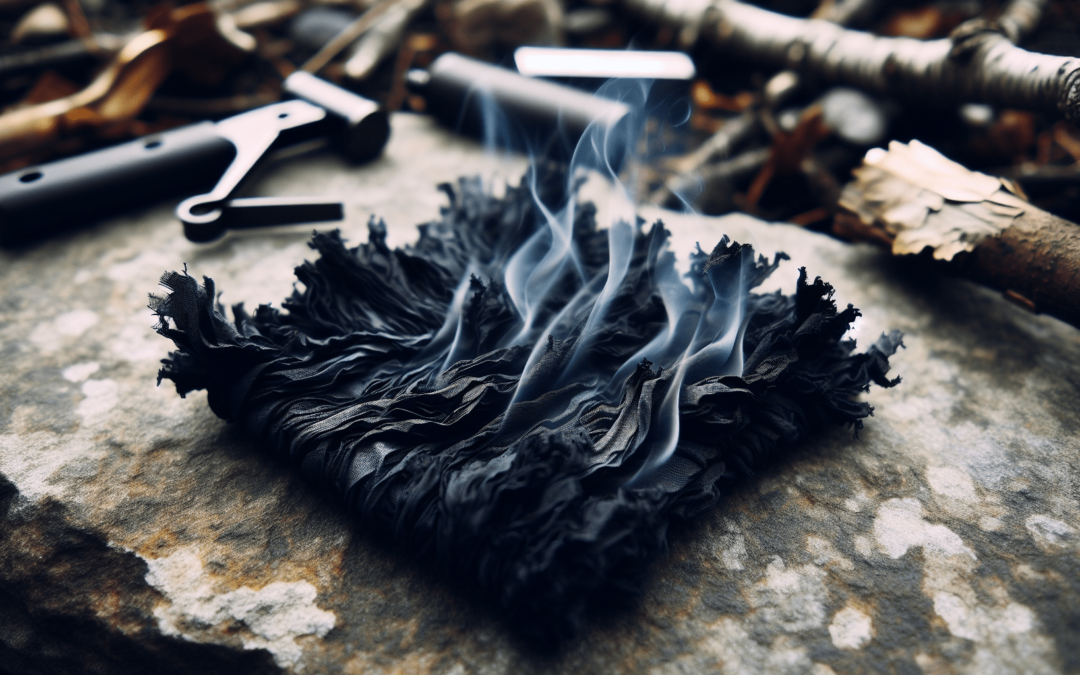How To Make And Use Char Cloth For Fire Starting”
Are you looking to enhance your outdoor adventure skills? In this article, you’ll discover the essentials of creating and effectively using char cloth, an invaluable tool for fire starting. With a few simple materials and steps, you can be ready to kindle a fire effortlessly, making your camping trips or survival scenarios a breeze. Dive in and learn how to transform everyday fabric into a reliable spark catcher, ensuring you’re always prepared to light up your surroundings. Have you ever found yourself in a situation where you desperately needed to start a fire, but the conditions were less than ideal? Whether you’re an avid camper, survivalist, or just enjoy a cozy backyard bonfire, learning how to make and use char cloth for fire starting can be a game-changer. In this guide, we’ll take you through the entire process, breaking it down step-by-step so you can easily follow along and master this essential skill.

What is Char Cloth?
Char cloth is a piece of fabric that has been charred in the absence of oxygen, making it a highly effective fire-starting material. It’s lightweight, easy to store, and ignites with just a spark, making it perfect for any fire-starting kit.
Why Use Char Cloth?
Char cloth is an invaluable tool for fire starting. Its benefits include:
- Reliability: Ignites easily even with minimal sparks.
- Versatility: Works well in various weather conditions.
- Compactness: Lightweight and can be stored in a small container.
- Reusability: You can make it yourself at home using simple materials.
Materials You’ll Need
To make char cloth, you only need a few basic materials, many of which you probably already have around the house.
| Material | Description |
|---|---|
| Cotton Fabric | 100% cotton (old t-shirts, jeans, or bed sheets) |
| Tin Container | Metal container with a tight-fitting lid (Altoids tin works well) |
| Heat Source | Campfire, gas stove, or portable burner |
| Sharp Tool | Awl, nail, or small drill to punch a hole in the tin |
Step-by-Step Guide to Making Char Cloth
1. Preparing Your Materials
The first step in making char cloth involves preparing your materials.
- Choose Your Fabric: Make sure it is 100% cotton as synthetic fabrics won’t work. Cut it into small pieces, usually around 2 inches by 2 inches.
- Prepare Your Container: Use a sharp tool to punch a small hole in the lid of your metal container. This allows gases to escape while preventing oxygen from entering.
2. Placing Fabric in the Container
Next, you’ll need to place your cotton fabric pieces inside the metal tin.
- Arrange Fabric: Lay the pieces flat inside the container ensuring they don’t overlap too much.
- Close the Lid: Secure the lid tightly to ensure it stays in place during the charring process.
3. Heating the Container
Now comes the most crucial part — heating the container.
- Choose Your Heat Source: You can use a campfire, gas stove, or portable burner.
- Begin Heating: Place the container on the heat source. You should start to see smoke emerging from the hole in the lid. This is normal and indicates that the material inside is charring.
- Monitor the Process: Continue heating until the smoke stops, which typically takes about 5-10 minutes. At this point, the material inside the tin has turned into char cloth.
4. Cooling Down and Checking
After heating, you’ll need to let the container cool down completely before opening it.
- Allow to Cool: Set the container aside in a safe place to cool down.
- Open Carefully: Once cool, open the lid carefully. The fabric inside should be black and brittle, indicating it has been successfully charred.

How to Use Char Cloth
Char cloth is highly effective for fire starting. Here’s how you can use it:
-
Prepare Your Fire Site
- Gather tinder, kindling, and fuel.
- Create a small nest of dry tinder.
-
Ignite the Char Cloth
- Using a flint and steel, ferro rod, or a magnesium fire starter, strike sparks onto the char cloth.
- Once a spark catches, the char cloth will begin to glow.
-
Transfer to Tinder
- Place the glowing char cloth into your nest of tinder.
- Blow gently to nurture the ember and help it ignite the tinder.
-
Build Your Fire
- Once the tinder has caught fire, gradually add kindling.
- After the kindling is burning well, you can add larger pieces of fuelwood.
Tips for Successful Char Cloth Making and Use
- Choose the Right Fabric: Always use 100% cotton fabric. Other materials may not char properly.
- Monitor the Heating Time: Don’t overheat the container. If you see no more smoke, your char cloth is ready.
- Store in a Waterproof Container: Once made, store your char cloth in a waterproof container to keep it dry.
- Practice: The more you practice, the more comfortable you’ll become with making and using char cloth.
Troubleshooting Common Issues
Char Cloth Won’t Ignite
- Dampness: Ensure the char cloth is completely dry.
- Insufficient Charring: Make sure the cloth is uniformly black and brittle.
Fabric is Not Charring Properly
- Wrong Material: Verify that you’re using 100% cotton fabric.
- Lack of Heat: Ensure that your heat source is sufficiently hot.
Historical Significance of Char Cloth
Char cloth has been used for centuries by various cultures for its fire-starting capabilities. Before modern conveniences, early humans relied on methods like flint and steel, where char cloth played an essential role in fire making.
Environmental Benefits
Making and using char cloth aligns with sustainable practices. By repurposing old fabric and using it for fire starting, you reduce waste and minimize your environmental footprint.
Conclusion
Char cloth is an age-old, reliable fire-starting material that every outdoor enthusiast should know how to make and use. With just a few simple materials and steps, you can create your own char cloth and ensure that you’re always prepared for your next adventure. Whether you’re camping in the wilderness, setting up a backyard bonfire, or honing your survival skills, char cloth will serve as a dependable companion in your fire-starting kit.
By mastering this skill, you not only gain a practical tool but also connect with a long tradition of fire-making techniques that have been essential to human survival. Happy fire starting!

